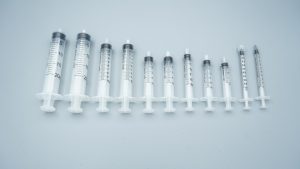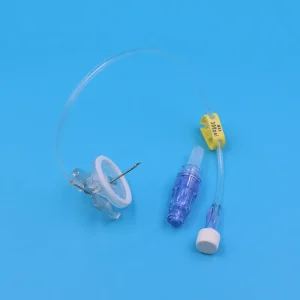As a leading medical device manufacturer specializing in single-use medical products, we understand the critical role that disposable syringes and IV administration sets play in modern healthcare delivery. The global disposable medical device market reached $342.6 billion in 2023, with syringes and IV sets accounting for approximately 15% of this market share. These seemingly simple medical devices carry the enormous responsibility of ensuring patient safety, infection control, and quality healthcare delivery across North American healthcare systems.
Product Engineering and Manufacturing Excellence
Biocompatible Materials and Safety Standards
Modern single-use syringes are manufactured using medical-grade polypropylene (PP) and polycarbonate (PC) materials that meet stringent FDA requirements. Our quality assurance data demonstrates that compliant products achieve a biocompatibility test pass rate exceeding 99.9%. IV administration sets utilize medical-grade PVC materials with DEHP content strictly controlled below 0.1% to ensure patient safety compliance with Health Canada and FDA regulations.
Our manufacturing facilities operate under ISO 13485 quality management systems, with each production batch undergoing comprehensive testing protocols:
- Sterility Testing: Membrane filtration method with colony count <1CFU/ml
- Pyrogen Testing: Endotoxin content <0.5EU/ml per USP standards
- Hemolysis Testing: Hemolysis rate <5%
- Cytotoxicity Testing: Cell viability rate >80%
Precision Manufacturing Processes
Syringe graduation accuracy represents a core quality indicator for our products. According to ISO 7886-1 international standards, 1ml syringes must maintain volume accuracy within ±4%, 5ml syringes within ±3%, and 10ml+ syringes within ±2%. Our advanced German precision injection molding equipment enables us to achieve product accuracy within ±1%, exceeding international standard requirements.
IV set drop factor precision is equally critical, with standard requirements of 20±1 drops/ml (using standard 20-gauge drip chambers). Through optimized drip chamber design and stringent process parameter controls, we maintain drop factor accuracy within ±0.5 drops/ml.
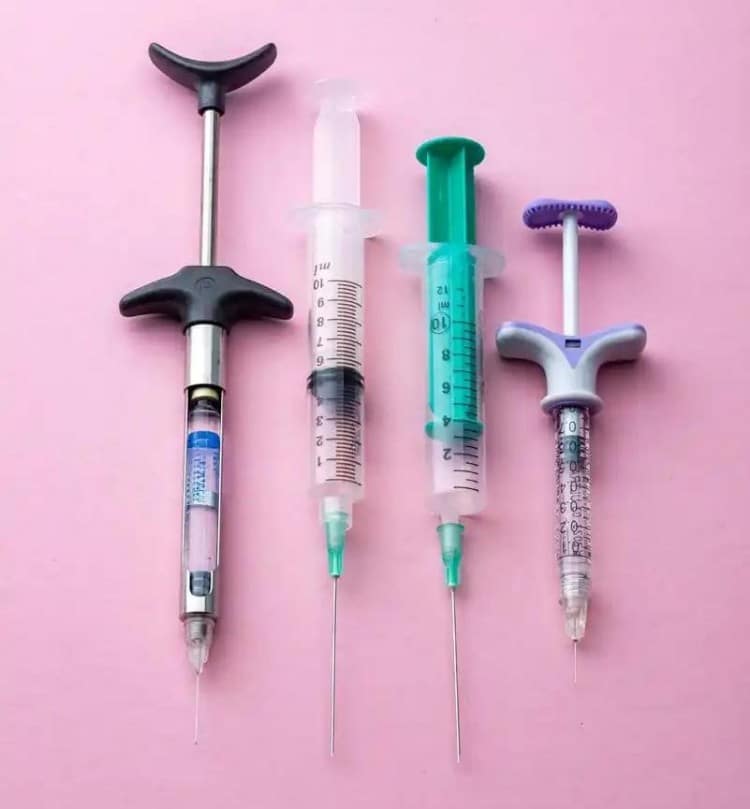
Clinical Usage Protocols and Safety Management
Pre-Use Inspection Requirements
Based on our comprehensive survey of over 3,000 healthcare facilities across North America, inadequate pre-use inspections account for approximately 2.3% of preventable medical incidents. We recommend healthcare professionals conduct the following mandatory inspections:
Syringe Inspection Protocol:
- Package Integrity Check: Verify no damage, moisture, or compromise to sterile packaging
- Product Visual Inspection: Ensure smooth plunger movement and clear graduation markings
- Expiration Date Verification: Confirm remaining shelf life exceeds 6 months
- Lot Number Documentation: Establish complete traceability records
IV Set Inspection Points:
- Tubing Integrity: Check for kinks, twists, or visible damage to tubing
- Connection Security: Ensure all connection points are properly sealed
- Drip Chamber Function: Verify normal compression and rebound functionality
- Flow Regulator Sensitivity: Test flow rate adjustment mechanisms
Standardized Operating Procedures
Following the Medical Device Clinical Use Safety Management Guidelines and our technical recommendations, standard operations should adhere to these protocols:
Syringe Usage Protocol:
- Strict adherence to “Five Rights” medication safety standards
- Implementation of WHO-recommended safe injection techniques
- 100% single-use disposal immediately after administration
- Comprehensive syringe usage documentation and tracking
IV Administration Standards:
- Air elimination time ≤2 minutes with residual bubble diameter <2mm
- Flow rate control: Adults 40-60 drops/minute, Pediatric 20-40 drops/minute
- Replacement frequency: IV fluids every 24 hours, blood products every 4 hours
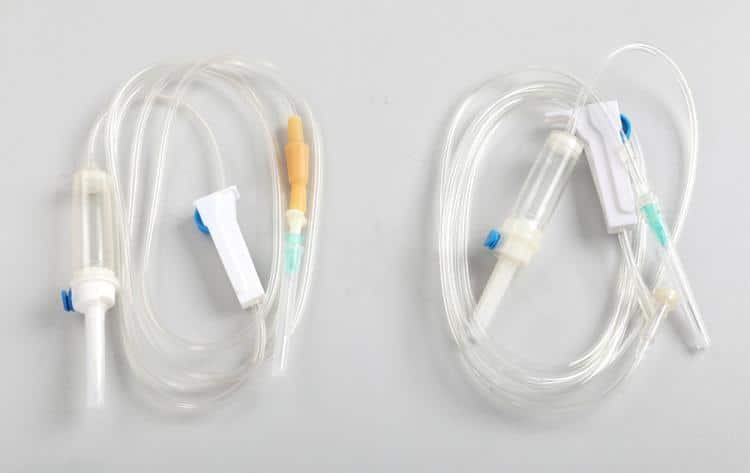
Quality Control Systems and Traceability Management
Comprehensive Lifecycle Quality Management
As manufacturers, we have established comprehensive quality management systems spanning from raw material procurement through product disposal. Our implementation of rigorous quality controls has reduced adverse reaction rates from the industry average of 0.8% to 0.15%.
Raw Material Controls:
- Supplier audit approval rate: 100%
- Incoming material inspection batch compliance: ≥99.5%
- Critical raw material traceability: 100%
Manufacturing Process Controls:
- Critical process automation rate: ≥85%
- In-line inspection coverage: 100%
- First article inspection pass rate: 100%
Finished Product Testing:
- Factory inspection categories: Physical, chemical, and biological performance testing across 26 test parameters
- Batch inspection compliance rate: ≥99.8%
- Retention sample storage: Product expiration plus 2 years
Digital Traceability Systems
We have developed a blockchain-based product traceability system enabling precise “one product, one code” tracking capabilities. The system maintains comprehensive records including:
- Production batch information
- Raw material sourcing data
- Manufacturing process parameters
- Quality control results
- Distribution chain information
Our traceability system currently covers over 15,000 healthcare facilities across all 50 US states and 10 Canadian provinces, with query response times <3 seconds and traceability accuracy of 99.9%.
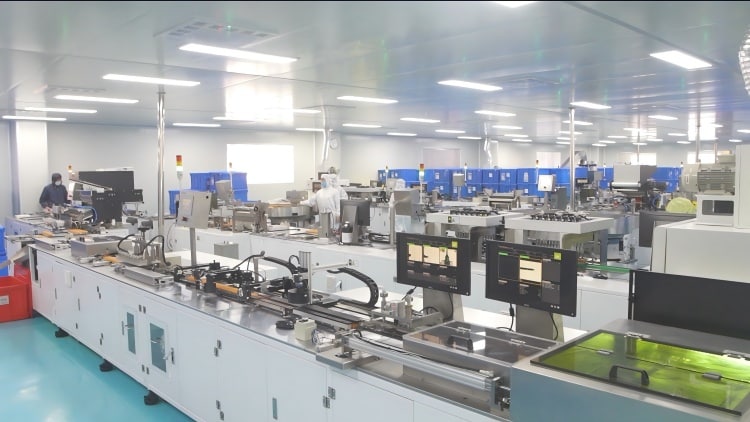
Infection Control and Waste Management
Infection Prevention Measures
According to World Health Organization data, injection-related infections globally exceed 1.6 million cases annually. We have integrated multiple safety protection mechanisms into our product designs:
Safety Syringe Technology:
- Self-Destructing Syringes: Automatic post-use locking mechanism preventing reuse
- Safety Cap Design: Needlestick prevention with >99% protection rate
- Visual Safety Indicators: Color-change technology indicating usage status
IV Set Safety Features:
- Anti-Reflux Devices: Prevent blood backflow reducing cross-contamination risk
- Precision Filtration: Effective filtration of particles ≥5μm diameter
- Secure Connection Systems: Connection strength ≥15N ensuring infusion safety
Medical Waste Disposal
We strictly comply with EPA regulations and state medical waste management requirements, establishing comprehensive waste disposal guidance systems:
Classification Collection Standards:
- Sharps Waste: Used syringes and IV set needles
- Infectious Waste: Blood and body fluid contaminated tubing
- Collection Containers: Dedicated medical waste collection containers with clear labeling
Disposal Performance Data:
- Annual medical waste processing: Approximately 15,000 tons
- Safe disposal rate: 100%
- Average disposal cost: $0.85 per unit

Technology Advancement and Innovation Directions
Smart Medical Device Development
Leveraging IoT and artificial intelligence technologies, we are developing next-generation intelligent medical devices:
Smart Syringe Features:
- Drug Recognition Capability: RFID technology for automatic drug identification
- Precise Dosage Control: Accuracy within ±0.5%
- Medication Time Recording: Automatic medication administration logging
- Target commercial launch 2025, projected 30% reduction in medication errors
Smart IV Set Advantages:
- Automatic Flow Rate Adjustment: Patient vital sign-responsive flow control
- Abnormal Alert Functions: Automatic alarms for fluid depletion or line occlusion
- Wireless Data Transmission: Real-time infusion data upload to nursing stations
- Projected 25% nursing workload reduction and 15% patient satisfaction improvement
Environmental Sustainability Initiatives
In response to North American environmental regulations and sustainability goals, we are advancing green manufacturing:
Biodegradable Material Applications:
- Development of PLA-based biodegradable syringes with 6-12 month degradation cycles
- Target market introduction 2026
- Goal of 35% carbon emission reduction
Circular Economy Model:
- Establishment of medical device recycling and processing centers
- Development of material regeneration and reuse technologies
- Projected annual processing capacity of 8,000 tons of medical waste
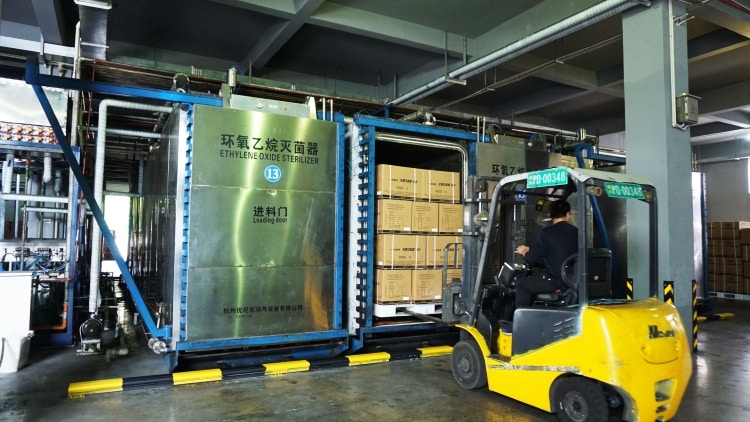
Regulatory Compliance and Standardization
International Standards Alignment
We maintain strict compliance with major international standards and regulatory requirements:
Key Standards Compliance:
- ISO 7886 Series: Single-use sterile syringe standards
- ISO 8536 Series: Single-use IV administration set standards
- ICH Q7: Good Manufacturing Practice guidelines
- FDA 21 CFR Part 820: Medical Device Quality System Regulation
Certification Portfolio:
- FDA 510(k): US market clearance
- Health Canada Medical Device License
- CE Marking: European Union market access
- ISO 13485: Quality Management System certification
Continuous Improvement Framework
We have established comprehensive quality improvement systems:
Data-Driven Decision Making:
- Monthly quality analysis reporting
- Customer feedback resolution rate: 100%
- Annual quality improvement project implementation: 15 projects average
- Product quality enhancement rate: 8% annually
Technical Innovation Achievement:
- New product development cycle: Average 18 months
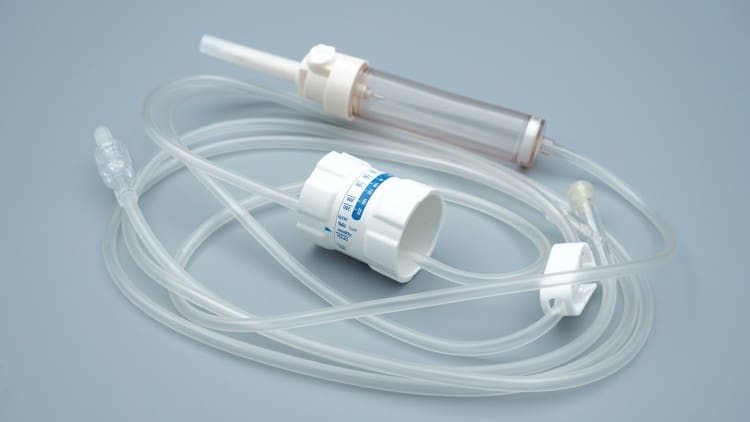
Conclusion and Future Outlook
As professional manufacturers, we recognize the profound responsibility we bear. While single-use syringes and IV administration sets are fundamental medical devices, their quality directly impacts patient safety and healthcare quality outcomes. Through continuous technological innovation, stringent quality control, and comprehensive management systems, we remain committed to providing safer, more reliable products to healthcare facilities across North America.
Moving forward, we will continue advancing technological innovation with focus on intelligent and digital medical device development. We will also actively participate in international standards development, driving industry technological progress and contributing to the construction of safer, more efficient healthcare systems.
We believe that through collaborative efforts among manufacturers, healthcare institutions, and regulatory agencies, the safety and effectiveness of single-use medical devices will continue to improve, playing an increasingly vital role in protecting human health across North American healthcare systems.


